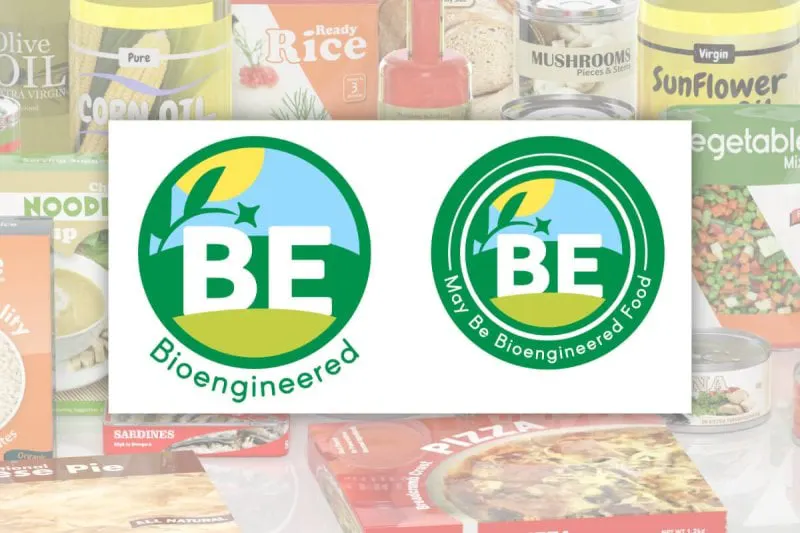Viewpoint: Foods made from genetically engineered crops must be labelled by 2022, but USDA guidance is confusing. Here’s how the new administration and food producers can address that
Viewpoint: Foods made from genetically engineered crops must be labelled by 2022, but USDA guidance is confusing. Here’s how the new administration and food producers can address that


When the [National Bioengineered Food Disclosure Law] is implemented in 2022, will it provide information useful to consumers or will it lead to more confusion? While the NBFDL establishes mandatory disclosure for bioengineered food content, the information disclosed may not be useful for several reasons.
[For example,] the disclosure itself is confusing. The NBFDL switches from the common term “GM,” which is more familiar to consumers, to “bioengineered” (BE). The intent of this change may have been to avoid the contentious history of “GM foods” by renaming them, but it could instead undermine consumer trust if consumers see it as a tactic to mask terms they commonly understand.…
First, we believe there should be education and information dissemination campaigns by the federal government (primarily FDA and USDA), food manufacturers, and retailers.
…
Secondly, given the consumer confusion that the regulations are likely to cause, USDA should reconsider whether to allow the substitution of similar terms to bioengineering, such as “genetic engineering” or GM.
…
Third, USDA should reconsider disclosure of highly refined ingredients in recognition that consumers would be best served by consistent disclosure of products “derived from bioengineering.”
If the goal of greater information to consumers is to be realized, USDA should rethink its regulations and consumers should be educated about the disclosures being provided.
Read the original post

 | Videos | More... |

Video: Nuclear energy will destroy us? Global warming is an existential threat? Chemicals are massacring bees? Donate to the Green Industrial Complex!
 | Bees & Pollinators | More... |

GLP podcast: Science journalism is a mess. Here’s how to fix it

Mosquito massacre: Can we safely tackle malaria with a CRISPR gene drive?

Are we facing an ‘Insect Apocalypse’ caused by ‘intensive, industrial’ farming and agricultural chemicals? The media say yes; Science says ‘no’
 | Infographics | More... |

Infographic: Global regulatory and health research agencies on whether glyphosate causes cancer
 | GMO FAQs | More... |

Why is there controversy over GMO foods but not GMO drugs?

How are GMOs labeled around the world?

How does genetic engineering differ from conventional breeding?
 | GLP Profiles | More... |

Alex Jones: Right-wing conspiracy theorist stokes fear of GMOs, pesticides to sell ‘health supplements’




 Trust issues: What happens when therapists use ChatGPT?
Trust issues: What happens when therapists use ChatGPT? Fighting deforestation with CO2: Biotechnology breakthrough creates sustainable palm oil alternative for cosmetics
Fighting deforestation with CO2: Biotechnology breakthrough creates sustainable palm oil alternative for cosmetics Viewpoint: Video — Big Solar is gobbling up productive agricultural land and hurting farmers yet providing little energy or sustainabilty gains
Viewpoint: Video — Big Solar is gobbling up productive agricultural land and hurting farmers yet providing little energy or sustainabilty gains Viewpoint — Fact checking MAHA mythmakers: How wellness influencers and RFK, Jr. undermine American science and health
Viewpoint — Fact checking MAHA mythmakers: How wellness influencers and RFK, Jr. undermine American science and health California, Washington, Oregon forge immunization alliance to safeguard vaccine access against federal undermining
California, Washington, Oregon forge immunization alliance to safeguard vaccine access against federal undermining 30-year-old tomato line shows genetic resistance to devastating virus
30-year-old tomato line shows genetic resistance to devastating virus The free-range chicken dilemma: Better for birds, but with substantial costs
The free-range chicken dilemma: Better for birds, but with substantial costs ‘You have to treat the brain first’: Rethinking chronic pain with Sanjay Gupta
‘You have to treat the brain first’: Rethinking chronic pain with Sanjay Gupta
